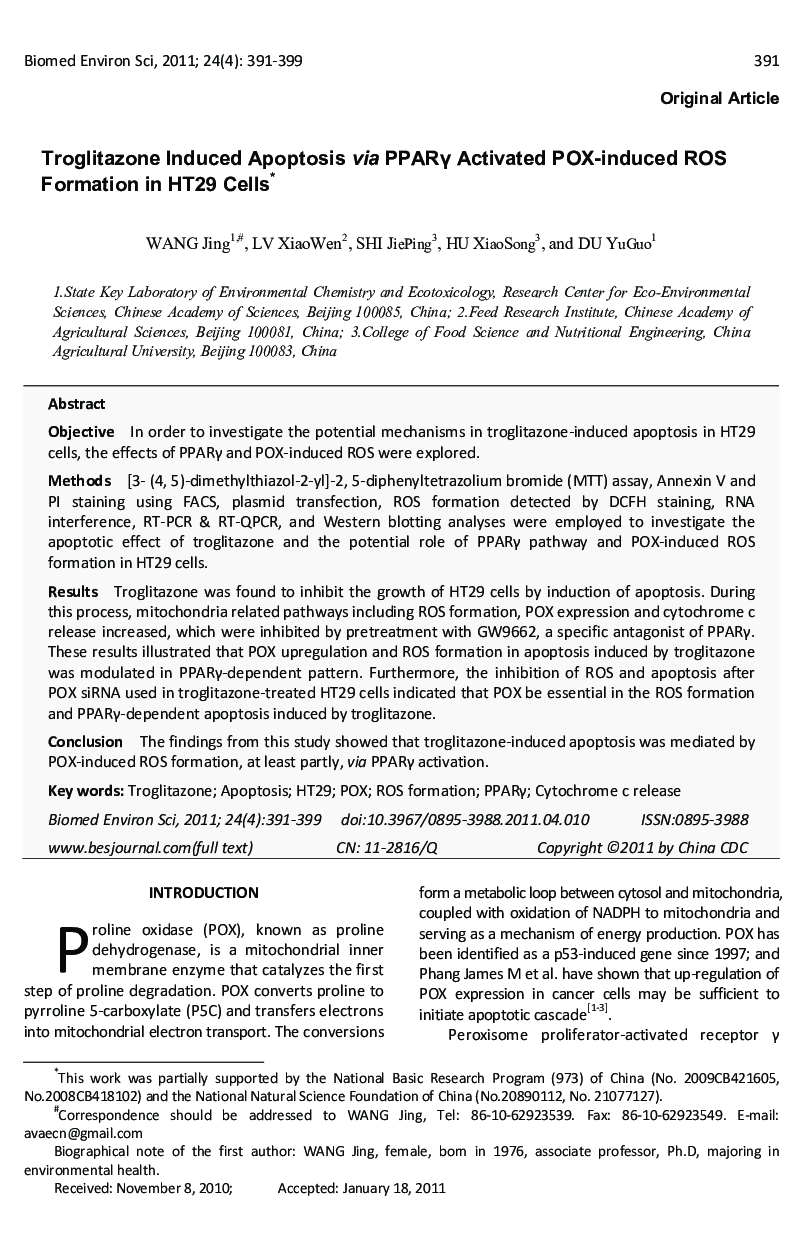| Article ID | Journal | Published Year | Pages | File Type |
|---|---|---|---|---|
| 4196616 | Biomedical and Environmental Sciences | 2011 | 9 Pages |
ObjectiveIn order to investigate the potential mechanisms in troglitazone-induced apoptosis in HT29 cells, the effects of PPARγ and POX-induced ROS were explored.Methods[3- (4, 5)-dimethylthiazol-2-yl]-2, 5-diphenyltetrazolium bromide (MTT) assay, Annexin V and PI staining using FACS, plasmid transfection, ROS formation detected by DCFH staining, RNA interference, RT-PCR & RT-QPCR, and Western blotting analyses were employed to investigate the apoptotic effect of troglitazone and the potential role of PPARγ pathway and POX-induced ROS formation in HT29 cells.ResultsTroglitazone was found to inhibit the growth of HT29 cells by induction of apoptosis. During this process, mitochondria related pathways including ROS formation, POX expression and cytochrome c release increased, which were inhibited by pretreatment with GW9662, a specific antagonist of PPARγ. These results illustrated that POX upregulation and ROS formation in apoptosis induced by troglitazone was modulated in PPARγ-dependent pattern. Furthermore, the inhibition of ROS and apoptosis after POX siRNA used in troglitazone-treated HT29 cells indicated that POX be essential in the ROS formation and PPARγ-dependent apoptosis induced by troglitazone.ConclusionThe findings from this study showed that troglitazone-induced apoptosis was mediated by POX-induced ROS formation, at least partly, via PPARγ activation.
